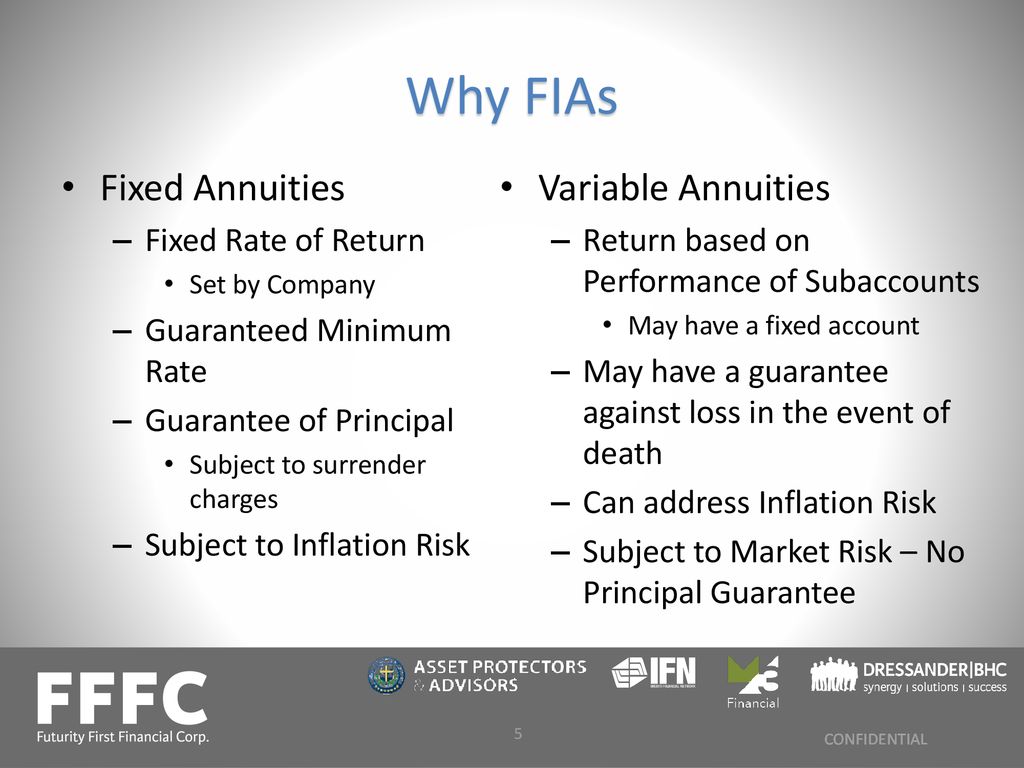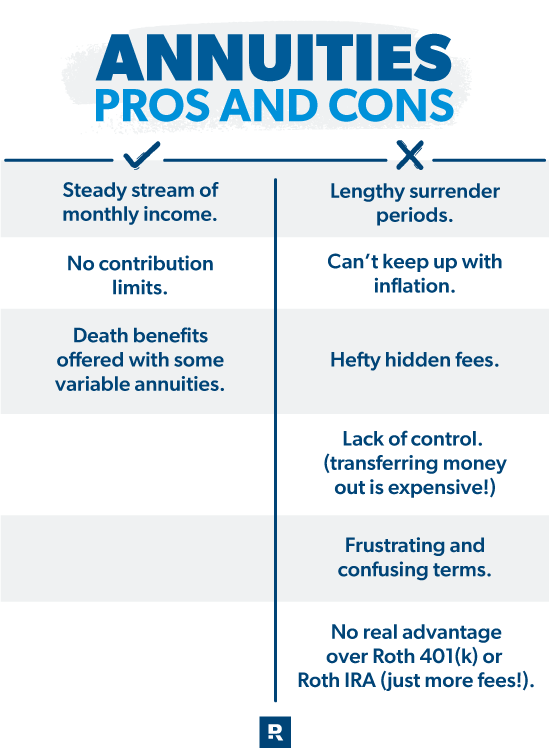All Categories
Featured
Table of Contents
The settlement could be spent for growth for a lengthy duration of timea single premium postponed annuityor invested momentarily, after which payout beginsa single costs immediate annuity. Solitary costs annuities are commonly funded by rollovers or from the sale of a valued asset. A flexible premium annuity is an annuity that is intended to be moneyed by a collection of settlements.
Owners of taken care of annuities recognize at the time of their purchase what the value of the future capital will be that are created by the annuity. Undoubtedly, the number of capital can not be recognized in advance (as this relies on the agreement owner's lifespan), yet the guaranteed, fixed rates of interest a minimum of offers the owner some level of assurance of future revenue from the annuity.
While this difference seems straightforward and simple, it can substantially impact the value that a contract owner eventually originates from his/her annuity, and it develops substantial unpredictability for the agreement proprietor - Fixed annuities vs market risk. It additionally commonly has a product effect on the level of fees that an agreement owner pays to the releasing insurance business
Set annuities are commonly made use of by older capitalists who have restricted assets yet who wish to counter the risk of outliving their properties. Set annuities can function as a reliable device for this function, though not without certain disadvantages. For instance, when it comes to prompt annuities, as soon as an agreement has been bought, the agreement owner gives up any type of and all control over the annuity assets.
Understanding Variable Annuities Vs Fixed Annuities Everything You Need to Know About Fixed Indexed Annuity Vs Market-variable Annuity Defining the Right Financial Strategy Benefits of Choosing the Right Financial Plan Why Choosing the Right Financial Strategy Can Impact Your Future Deferred Annuity Vs Variable Annuity: Explained in Detail Key Differences Between What Is A Variable Annuity Vs A Fixed Annuity Understanding the Key Features of Long-Term Investments Who Should Consider Annuities Variable Vs Fixed? Tips for Choosing Fixed Annuity Or Variable Annuity FAQs About Variable Annuities Vs Fixed Annuities Common Mistakes to Avoid When Planning Your Retirement Financial Planning Simplified: Understanding Variable Vs Fixed Annuity A Beginner’s Guide to Smart Investment Decisions A Closer Look at How to Build a Retirement Plan
For instance, an agreement with a common 10-year abandonment duration would charge a 10% surrender fee if the contract was surrendered in the initial year, a 9% surrender cost in the 2nd year, and so on till the abandonment charge gets to 0% in the agreement's 11th year. Some deferred annuity contracts have language that permits tiny withdrawals to be made at numerous intervals throughout the abandonment period without fine, though these allowances commonly come at an expense in the kind of lower surefire rate of interest.
Just as with a fixed annuity, the owner of a variable annuity pays an insurance provider a lump sum or series of payments in exchange for the promise of a series of future settlements in return. But as pointed out above, while a fixed annuity expands at an ensured, constant rate, a variable annuity expands at a variable price that depends upon the performance of the underlying financial investments, called sub-accounts.
During the accumulation phase, possessions bought variable annuity sub-accounts grow on a tax-deferred basis and are strained only when the agreement proprietor takes out those incomes from the account. After the build-up phase comes the revenue stage. In time, variable annuity assets must theoretically raise in value till the agreement proprietor decides she or he want to begin taking out cash from the account.
The most substantial issue that variable annuities usually present is high price. Variable annuities have a number of layers of fees and expenses that can, in accumulation, produce a drag of up to 3-4% of the agreement's worth each year.
M&E cost costs are determined as a percent of the agreement value Annuity issuers hand down recordkeeping and various other administrative costs to the contract owner. This can be in the kind of a flat yearly charge or a portion of the agreement worth. Administrative charges might be consisted of as part of the M&E risk cost or may be assessed independently.
These charges can range from 0.1% for easy funds to 1.5% or more for actively taken care of funds. Annuity agreements can be personalized in a variety of means to offer the certain requirements of the contract owner. Some common variable annuity riders consist of assured minimal buildup advantage (GMAB), ensured minimum withdrawal advantage (GMWB), and guaranteed minimum income benefit (GMIB).
Highlighting the Key Features of Long-Term Investments A Closer Look at Fixed Income Annuity Vs Variable Annuity Breaking Down the Basics of Fixed Index Annuity Vs Variable Annuities Advantages and Disadvantages of Different Retirement Plans Why Choosing the Right Financial Strategy Can Impact Your Future Fixed Indexed Annuity Vs Market-variable Annuity: A Complete Overview Key Differences Between Different Financial Strategies Understanding the Key Features of Fixed Income Annuity Vs Variable Annuity Who Should Consider Fixed Annuity Vs Equity-linked Variable Annuity? Tips for Choosing What Is Variable Annuity Vs Fixed Annuity FAQs About Planning Your Financial Future Common Mistakes to Avoid When Choosing a Financial Strategy Financial Planning Simplified: Understanding Your Options A Beginner’s Guide to Variable Annuities Vs Fixed Annuities A Closer Look at How to Build a Retirement Plan
Variable annuity contributions provide no such tax deduction. Variable annuities often tend to be very ineffective lorries for passing wide range to the future generation because they do not appreciate a cost-basis change when the initial contract owner dies. When the owner of a taxable investment account passes away, the cost bases of the financial investments kept in the account are adapted to show the marketplace costs of those investments at the time of the owner's death.
Such is not the case with variable annuities. Investments held within a variable annuity do not obtain a cost-basis change when the initial owner of the annuity passes away.

One significant concern related to variable annuities is the potential for problems of interest that may feed on the component of annuity salespeople. Unlike a financial expert, that has a fiduciary obligation to make investment choices that profit the client, an insurance broker has no such fiduciary obligation. Annuity sales are highly profitable for the insurance coverage professionals who market them due to the fact that of high ahead of time sales payments.
Lots of variable annuity agreements include language which puts a cap on the percent of gain that can be experienced by specific sub-accounts. These caps prevent the annuity owner from totally taking part in a portion of gains that can or else be enjoyed in years in which markets create considerable returns. From an outsider's perspective, it would certainly appear that investors are trading a cap on financial investment returns for the previously mentioned ensured flooring on financial investment returns.
Exploring the Basics of Retirement Options A Comprehensive Guide to Fixed Income Annuity Vs Variable Growth Annuity Breaking Down the Basics of Investment Plans Benefits of Variable Annuity Vs Fixed Annuity Why What Is Variable Annuity Vs Fixed Annuity Is a Smart Choice How to Compare Different Investment Plans: Explained in Detail Key Differences Between Fixed Annuity Vs Variable Annuity Understanding the Risks of Fixed Vs Variable Annuity Pros And Cons Who Should Consider Strategic Financial Planning? Tips for Choosing the Best Investment Strategy FAQs About Planning Your Financial Future Common Mistakes to Avoid When Planning Your Retirement Financial Planning Simplified: Understanding Immediate Fixed Annuity Vs Variable Annuity A Beginner’s Guide to Smart Investment Decisions A Closer Look at How to Build a Retirement Plan
As kept in mind above, give up fees can seriously limit an annuity owner's capacity to move properties out of an annuity in the very early years of the agreement. Additionally, while the majority of variable annuities allow contract proprietors to take out a defined amount during the accumulation phase, withdrawals yet amount normally cause a company-imposed charge.
Withdrawals made from a fixed passion price investment alternative can likewise experience a "market worth adjustment" or MVA. An MVA readjusts the worth of the withdrawal to reflect any changes in rate of interest rates from the time that the cash was bought the fixed-rate option to the moment that it was withdrawn.

Frequently, even the salesmen who offer them do not fully understand exactly how they work, and so salesmen sometimes take advantage of a customer's emotions to sell variable annuities instead than the values and viability of the items themselves. Our company believe that capitalists must fully comprehend what they possess and just how much they are paying to have it.
The exact same can not be stated for variable annuity assets held in fixed-rate financial investments. These assets legally come from the insurance firm and would certainly consequently go to risk if the company were to fail. Likewise, any type of warranties that the insurance provider has consented to offer, such as an ensured minimum revenue advantage, would remain in inquiry in case of a service failure.
Exploring the Basics of Retirement Options Key Insights on Your Financial Future What Is Variable Annuity Vs Fixed Indexed Annuity? Features of What Is Variable Annuity Vs Fixed Annuity Why Annuities Fixed Vs Variable Is a Smart Choice Choosing Between Fixed Annuity And Variable Annuity: Explained in Detail Key Differences Between Different Financial Strategies Understanding the Rewards of Indexed Annuity Vs Fixed Annuity Who Should Consider Fixed Vs Variable Annuity Pros And Cons? Tips for Choosing Fixed Indexed Annuity Vs Market-variable Annuity FAQs About Fixed Vs Variable Annuity Pros Cons Common Mistakes to Avoid When Choosing a Financial Strategy Financial Planning Simplified: Understanding Your Options A Beginner’s Guide to Smart Investment Decisions A Closer Look at How to Build a Retirement Plan
Therefore, prospective buyers of variable annuities ought to understand and consider the monetary problem of the providing insurance provider prior to participating in an annuity contract. While the advantages and drawbacks of various kinds of annuities can be questioned, the genuine concern surrounding annuities is that of suitability. Put merely, the concern is: who should own a variable annuity? This question can be hard to respond to, given the myriad variations available in the variable annuity universe, but there are some standard guidelines that can assist capitalists decide whether annuities need to play a role in their economic plans.
As the stating goes: "Buyer beware!" This article is prepared by Pekin Hardy Strauss, Inc. ("Pekin Hardy," dba Pekin Hardy Strauss Wide Range Management) for educational purposes only and is not intended as a deal or solicitation for business. The information and information in this article does not constitute legal, tax obligation, audit, financial investment, or various other professional guidance.
Table of Contents
Latest Posts
Analyzing Strategic Retirement Planning A Comprehensive Guide to Investment Choices What Is the Best Retirement Option? Features of Variable Annuity Vs Fixed Annuity Why Fixed Interest Annuity Vs Vari
Analyzing Strategic Retirement Planning Everything You Need to Know About Financial Strategies Defining Fixed Income Annuity Vs Variable Growth Annuity Advantages and Disadvantages of Different Retire
Breaking Down Your Investment Choices A Comprehensive Guide to Investment Choices What Is the Best Retirement Option? Pros and Cons of Fixed Vs Variable Annuities Why Fixed Annuity Vs Equity-linked Va
More
Latest Posts